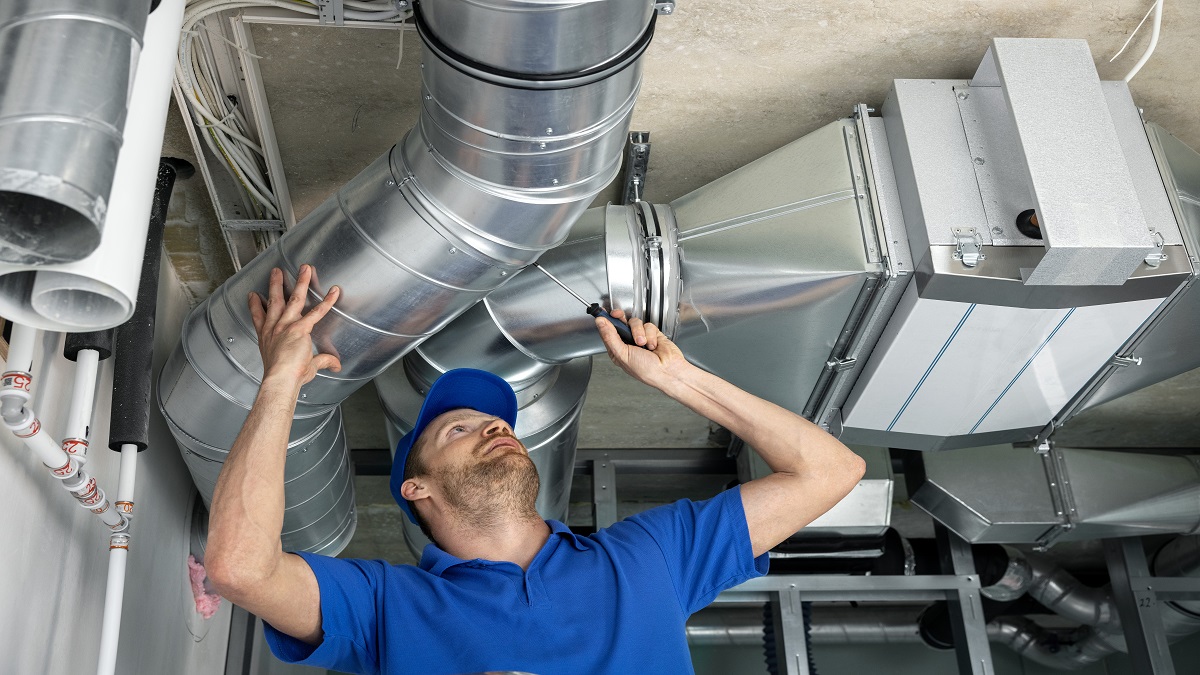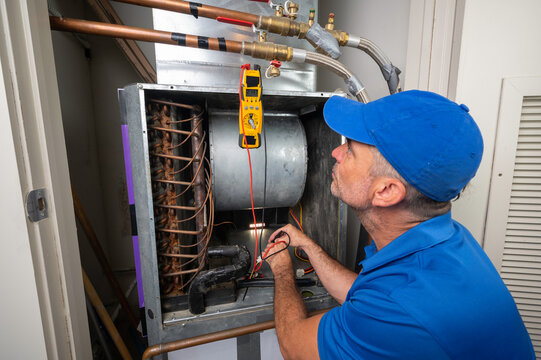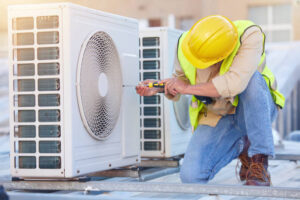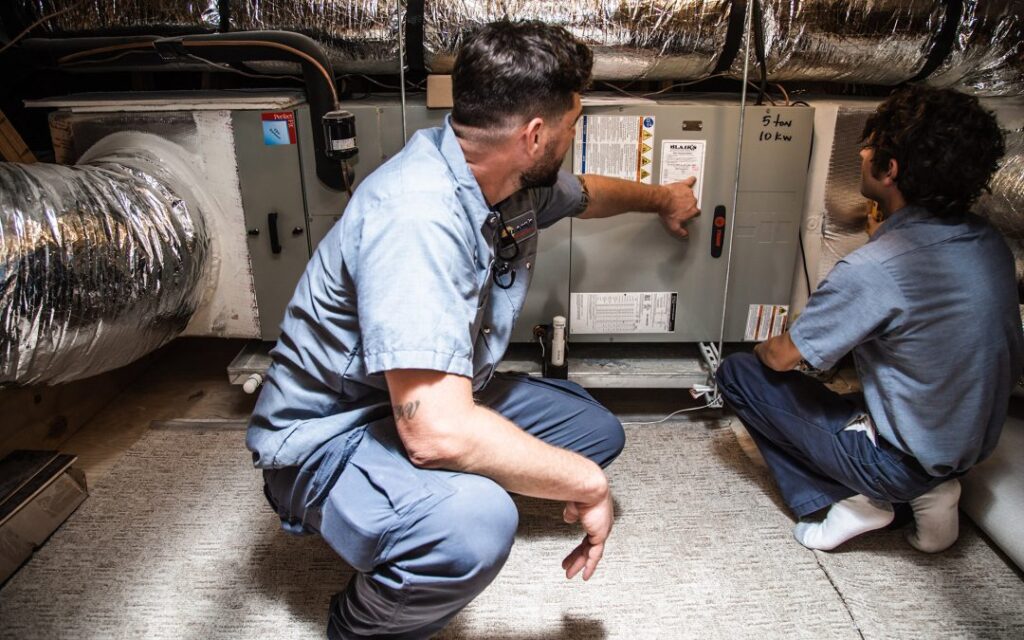
Powerful Strategies for Generating HVAC Leads in 2025

Introduction to HVAC Lead Generation
As the HVAC industry continues to evolve, effective lead generation becomes increasingly critical. In 2025, businesses must adapt to the changing landscape to remain competitive and relevant. One notable solution in this regard is offered by Wirala Inc., which provides comprehensive services designed to enhance lead generation strategies specifically tailored for HVAC professionals.

The HVAC market is experiencing significant transformation due to advancements in technology, shifts in consumer behavior, and increased competition. Gone are the days when traditional advertising alone could suffice to attract potential clients. Today, HVAC companies are compelled to explore innovative approaches to capture the attention of their target audience. This shift necessitates the adoption of digital marketing tactics, social media engagement, and data-driven strategies to optimize lead generation efforts.
Moreover, as consumers increasingly turn to online platforms for information and services, understanding the digital landscape is paramount. Key strategies such as search engine optimization (SEO), pay-per-click advertising, and content marketing play essential roles in improving a company’s visibility and accessibility. Additionally, leveraging social media channels allows HVAC businesses to connect with consumers on a personal level, fostering trust and engagement.
With the rise of smart home technology and environmentally friendly solutions, professionals in the HVAC sector must also align their lead generation efforts with current trends and consumer preferences. This alignment improves the likelihood of attracting high-quality leads that are more likely to convert into loyal customers.
In conclusion, understanding the importance of lead generation and the methods available to enhance it is vital for HVAC businesses in 2025. Embracing modern strategies while adapting to market changes will ensure sustained growth and success in this competitive industry.
Understanding Your Target Audience
Identifying and understanding your ideal customers is a fundamental step for HVAC businesses striving to generate meaningful leads in 2025. The process begins with gathering demographic insights that outline the age, gender, income, and location of your potential clients. This information will help you to better understand who your audience is and what HVAC services they might require. For instance, targeting homeowners aged 30-50 in suburban areas may yield a higher conversion rate than focusing on urban renters.
Beyond demographics, developing detailed buyer personas is essential. A buyer persona is a semi-fictional representation of your ideal customer based on market research, customer insights, and real data. This includes compelling details about their motivations, challenges, and needs regarding HVAC services. By creating these personas, you can develop tailored marketing messages that resonate with your target audience, addressing their specific pain points. For example, a buyer persona for a busy working parent may highlight the need for energy-efficient solutions that save both time and money.
Behavioral factors are also crucial when understanding your target audience. Monitoring online behaviors, such as how potential customers engage with your content, can provide valuable insights. Analyzing website analytics, social media interactions, and feedback from past customers can reveal patterns in preferences and spending habits. By leveraging this data, HVAC businesses can align their marketing strategies to be more effective, ultimately driving lead generation efforts that are directly focused on consumer behavior.
To illustrate the importance of understanding your audience, consider a hypothetical HVAC company that discovered a significant portion of their customers were concerned about air quality. By highlighting air purification systems in their marketing materials, they successfully attracted more leads and converted them into loyal customers. In 2025, HVAC businesses must prioritize knowing their audience to build strategies that generate high-quality leads consistently.
Leveraging Digital Marketing Platforms
In the rapidly evolving landscape of HVAC services, leveraging digital marketing platforms is essential for generating quality leads. With consumers increasingly turning to online channels to find service providers, HVAC businesses must establish a robust digital presence. Key platforms to consider include social media, search engine optimization (SEO), and pay-per-click (PPC) advertising.
Social media is a powerful tool for HVAC businesses to engage with potential customers. Platforms like Facebook, Instagram, and Twitter allow companies to create compelling content that showcases their services, offers promotions, and shares customer testimonials. It is crucial to maintain a consistent posting schedule and engage with followers promptly to foster a sense of trust and reliability. Sponsored posts and targeted ads can further enhance reach, ensuring that your offerings are seen by the right audience.
Search engine optimization (SEO) is another vital digital marketing strategy. By optimizing website content for search engines, HVAC businesses can increase their visibility when potential customers search for relevant services. This involves using keywords that potential clients might use during their search, as well as optimizing local SEO to attract clients in your geographical area. Creating informative blog posts and landing pages can significantly boost organic traffic, leading to higher lead generation.
Additionally, pay-per-click (PPC) advertising provides HVAC companies with an opportunity to appear at the top of search results. This strategy enables businesses to target specific keywords while controlling their advertising budget. Crafting targeted ads that address common customer pain points, such as energy efficiency or emergency repairs, can lead to higher conversion rates. Effective landing pages that deliver a clear call to action are equally important in ensuring that the traffic generated translates to actual leads.
By integrating these digital marketing platforms into their overall lead generation strategy, HVAC businesses can effectively attract and engage potential customers, ultimately driving growth in 2025 and beyond.
Building an Engaging Website
In the digital age, a well-designed website plays a pivotal role in generating leads for HVAC businesses. Your website serves as the first point of contact with potential customers and significantly influences their perception of your services. Therefore, it is essential that your site is not only aesthetically pleasing but also user-friendly and optimized for conversions. An effective website should feature clear navigation, enabling visitors to find the information they need quickly and without confusion.
One of the essential elements of a high-converting website is the creation of effective landing pages. These pages should be tailored specifically to capture leads by presenting visitors with compelling offers that align with their needs. Utilizing targeted keywords related to HVAC services can help improve your search engine visibility, directing more traffic to these landing pages. Ensuring that these pages encompass strong headlines, concise and persuasive copy, and visuals that reinforce your offerings will enhance engagement and prompt visitors to take action.
Call-to-action (CTA) buttons are another critical component. They should be prominently placed and designed to stand out on the page, providing clear instructions on what the visitor should do next, such as scheduling a consultation or signing up for a newsletter. The language used in these CTAs should evoke a sense of urgency, encouraging users to act promptly.
With the increasing use of mobile devices, mobile responsiveness is non-negotiable. A significant portion of your audience will access your website through smartphones and tablets, and a mobile-optimized site ensures a seamless experience across all devices. A responsive design not only retains users but also improves your search engine rankings, as Google prioritizes mobile-friendly websites in its algorithm.
Incorporating these elements can greatly enhance your HVAC lead generation efforts and effectively promote the services offered by companies like Wirala Inc. A focus on building an engaging website is an investment that yields significant returns in the competitive HVAC market of 2025.
Utilizing Content Marketing
In the competitive realm of HVAC services, implementing an effective content marketing strategy is paramount for generating leads. Content marketing encompasses the creation of valuable, relevant, and consistent content aimed at attracting and engaging a target audience. By producing well-researched blog posts, instructional tutorials, and engaging videos, HVAC businesses can showcase their expertise while addressing the needs of potential customers.
Creating informative content offers several benefits. Firstly, it positions HVAC companies as authoritative figures in the industry. When potential clients seek answers to common HVAC-related queries, they are more likely to trust a business that demonstrates knowledge through comprehensive content. This authority can lead to increased website traffic as users are drawn to insightful articles or video tutorials that effectively solve their problems. Additionally, content such as maintenance tips, energy-saving advice, and system comparisons can provide immense value to customers, encouraging them to share the information with peers and thus expanding the HVAC business’s reach.
Moreover, by focusing on queries commonly posed by consumers, HVAC businesses can enhance their visibility in search engines. Optimizing content with appropriate keywords such as “HVAC maintenance tips” or “air conditioning troubleshooting” can elevate their rankings on search engine results pages, thereby generating quality leads. This tactic ensures that the content is not only engaging but also discoverable by individuals actively seeking HVAC services.
Using diverse formats within content marketing—such as blog posts, infographics, and videos—enhances user experience, catering to various preferences and learning styles among potential clients. Ultimately, a robust content marketing strategy can foster trust, improve brand visibility, and drive lead generation in the HVAC sector, paving the way for business growth in 2025 and beyond.
Networking and Building Partnerships
In the highly competitive HVAC industry, networking and developing robust partnerships with complementary businesses are essential strategies for generating leads. Successful HVAC companies often leverage their relationships with others to create mutually beneficial referral systems that enhance their outreach and credibility. By collaborating with businesses such as builders, property managers, and electrical contractors, HVAC professionals can access a wider network of potential clients who may require their services.
Establishing these connections involves proactive community engagement and attendance at industry events, trade shows, and local business gatherings. These settings provide HVAC professionals with opportunities to mingle with other businesses and forge partnerships that can lead to consistent referrals. For instance, a contractor specializing in residential construction may require HVAC services for new homes, presenting an excellent opportunity for HVAC professionals to solidify a partnership that benefits both parties.
Considering real-world examples, a local HVAC business partnered with a well-known home improvement store, allowing them to offer exclusive discounts and promotions to customers referred by the store. This strategy not only bolstered lead generation for the HVAC business but also enhanced the store’s appeal by providing comprehensive service solutions to its clientele. Similarly, collaborations between HVAC providers and property management companies have proven effective, as property managers often recommend trusted service providers to their tenants.
This approach to networking not only increases visibility within the community but also reinforces trust with potential clients. Collaborative relationships can lead to long-term business opportunities, making it crucial for HVAC professionals to invest time and resources in building strong networks. By prioritizing networking and partnerships, HVAC businesses can significantly enhance their ability to generate leads in 2025 and beyond.
Harnessing the Power of Reviews and Testimonials
In today’s digital landscape, customer reviews and testimonials hold significant influence over potential clients, particularly when it comes to HVAC services. As consumers increasingly rely on online research before making purchasing decisions, showcasing positive feedback becomes essential for businesses aiming to generate leads. Customer testimonials act as endorsements that enhance credibility and foster trust, making them a pivotal element in marketing strategies.
To effectively solicit reviews, businesses can develop a structured approach that includes timing and methods. Following a service call, companies should encourage clients to share their experiences. This can be achieved through automated email follow-ups or personalized messages thanking them for their business, coupled with a gentle request for feedback. Incentives such as discounts on future services or entry into a contest can also motivate clients to leave positive reviews, thus expanding the number of testimonials available for potential customers to browse.
Displaying these reviews across various platforms is another crucial step. Websites, social media profiles, and even Google My Business listings can benefit from the thoughtful integration of positive client feedback. An organized display of testimonials not only highlights customer satisfaction but also significantly enhances the business’s online presence. Moreover, the use of visuals, such as before-and-after photos combined with customer comments, can amplify the emotional appeal and further engage prospective clientele.
Understanding the psychological impact of social proof is vital for HVAC businesses. The awareness that others have had positive interactions with a company provides reassurance to potential customers, diminishing fears associated with perceived risks. In essence, the power of customer reviews and testimonials can dramatically influence buying decisions, cementing their role as an indispensable asset in generating leads for HVAC services in 2025.
Implementing CRM and Lead Tracking Tools
In the competitive landscape of HVAC services, the effective management of customer interactions and leads is paramount. Customer Relationship Management (CRM) systems and lead tracking tools have emerged as indispensable resources for businesses aiming to streamline their operations and enhance customer engagement. By leveraging these technologies, HVAC companies can manage their leads more efficiently, ultimately leading to increased sales and customer retention.
CRM systems provide a centralized platform where HVAC businesses can capture, organize, and analyze customer data. This helps in tracking interactions with potential clients from the initial contact to the final sale. Additionally, CRM tools often come equipped with features such as automated follow-ups, appointment scheduling, and real-time analytics. These functionalities not only save time but also ensure that leads are nurtured effectively throughout the sales process, minimizing the risk of losing potential customers.
Moreover, lead tracking tools complement CRM systems by offering deeper insights into lead behavior and engagement. By monitoring how leads interact with marketing materials, HVAC businesses can better understand their interests and preferences. This data-driven approach enables companies to tailor their marketing strategies, focusing on the channels and messaging that resonate most with their audience. For instance, knowing which type of content generates the most inquiries can guide future campaigns, allowing HVAC businesses to allocate resources more effectively.
Furthermore, integrating these systems empowers HVAC firms to analyze the performance of their marketing initiatives. By assessing metrics such as conversion rates and customer acquisition costs, businesses can refine their strategies and increase their return on investment. In a rapidly evolving market, utilizing CRM and lead tracking tools is not merely an advantage; it is crucial for sustaining growth and adapting to changing consumer demands in 2025 and beyond.
Conclusion and Next Steps
In conclusion, the HVAC industry is evolving, and businesses must adopt innovative strategies to remain competitive in generating valuable leads. Throughout this blog post, we have discussed several effective tactics that can help HVAC companies capture the attention of potential customers, including leveraging digital marketing, enhancing customer relationships, providing valuable content, and utilizing social media platforms. These methods not only facilitate lead acquisition but also foster trust and credibility among the target audience.
It is crucial for HVAC businesses to recognize that lead generation is not a one-time effort but a continuous process that requires regular assessment and adaptation. As market trends shift and consumer preferences change, companies must be prepared to revise their approaches to attract the right clientele. Staying updated on technological advancements and employing data-driven insights can significantly enhance the effectiveness of lead generation efforts.
For HVAC companies looking to elevate their lead generation strategies, partnering with a specialized service provider can yield significant benefits. Wirala Inc. offers expert guidance tailored to the HVAC industry, focusing on innovative solutions that maximize lead generation potential. To facilitate this growth, Wirala Inc. provides a one-month free trial along with a complimentary consultation for businesses eager to enhance their clientele. Embracing these resources can lead to substantial improvements in overall business performance.
As you look to implement these strategies discussed, remember the importance of consistency, adaptability, and leveraging professional resources. By taking proactive steps towards refining your lead generation tactics, your HVAC business can thrive in 2025 and beyond.

